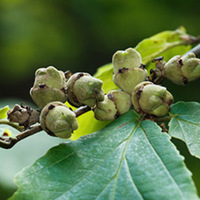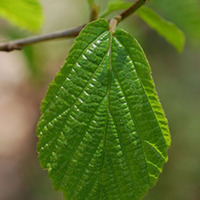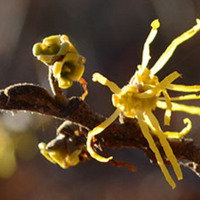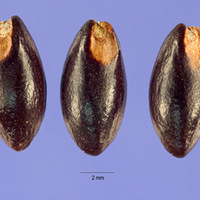Witch Hazel : Physical Characteristics
 |
 |
 |
 |
| Unripened fruit of witch hazel tree (Potterfield, 2011) | Close up of veination on leaf (Ramsey, 2007) | Witch hazel bloom and terminal buds (Hayes, 2014) | Three mature witch hazel seeds (Hurst) |
Witch hazel is a small tree that may be found along the edges of rivers or in the understory of moist forests. It’s bark is grey-brown and may appear scaly in older specimen. The trunk is about 18 inches in circumference and may grow 20 to 30 feet in height and have a similar sized spread. Its branches are large and crooked, and form “an irregular, rounded, open crown”. It’s leaves are simple, alternate, and narrow towards the base. They may be 3-6 inches long and have 5-7 pairs of veins. The oval leaves are thin and coarse, with scalloped edges. Witch hazel also have small rust-colored hairs that grows around its twigs.
The genus Hamameliscomes from the Greek words “hama” and “melon”, which mean “together with fruit”. The name describes the trees flowering process: it bears the flowers and the fruit of the tree come out at the same time. H. virginiana may be in flower as early as October and as late as December, but mainly in November. This lasts about two to three weeks, but the seed pods will remain after the flowers are gone: they take around 12 months to come to full maturity. The flowers have yellow strap-like petals which emit a strong, clean aroma. The petals are around ¾ of an inch in length and usually come in sets of four. Seed pods grow in clusters of three. Initially, they are green, but they turn brown as they ripen. Matured seed pods contain two small black seeds, which are expelled when the pods have dried enough. The pod will split apart and create a noise that may be heard from over 40 feet away, with seeds being ejected up to 30 feet.
